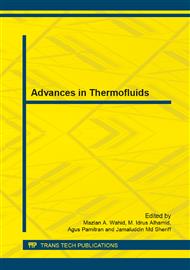p.169
p.176
p.185
p.192
p.201
p.206
p.213
p.217
p.223
Controlled Auto-Ignition Combustion in a Two-Stroke Cycle Engine Using Hot Burned Gases
Abstract:
A new combustion concept, which is viewed increasingly as a probable solution to these issues is Controlled Auto-Ignition (CAI) Combustion. In such an engine, a homogeneous mixture of air, fuel and residual gases is compressed until auto-ignition occurs. Due to its significantly low temperature combustion, NOx will be dramatically reduced while the mixture will be under ultra-lean fuel-air condition, thus able to achieve high efficiency and low emission. In the case of two-stroke engine, problem of poor combustion efficiency and excessive white smoke emission can be addressed by the incorporation some features that will ultimately convert a typical two-stroke engine into an efficient CAI engine demonstrating the best of both features. Due to its inherent high internal residual gas rate in partial load operation, the two-stroke engine has been the first application to benefit from the unconventional CAI combustion process. This paper will concisely discuss the utilization of hot burned gas for induction thus imposing a CAI combustion feature onto two-stroke cycle engine. Among the features incorporated are the increasing in the level of Exhaust gas Recirculation and cycle-by-cycle uniformity of the air-fuel ratio (AFR) supplied to cylinder, which will be crucial in creating a suitable temperature within the engine’s combustion chamber.
Info:
Periodical:
Pages:
201-205
Citation:
Online since:
August 2013
Price:
Сopyright:
© 2013 Trans Tech Publications Ltd. All Rights Reserved
Share:
Citation:


